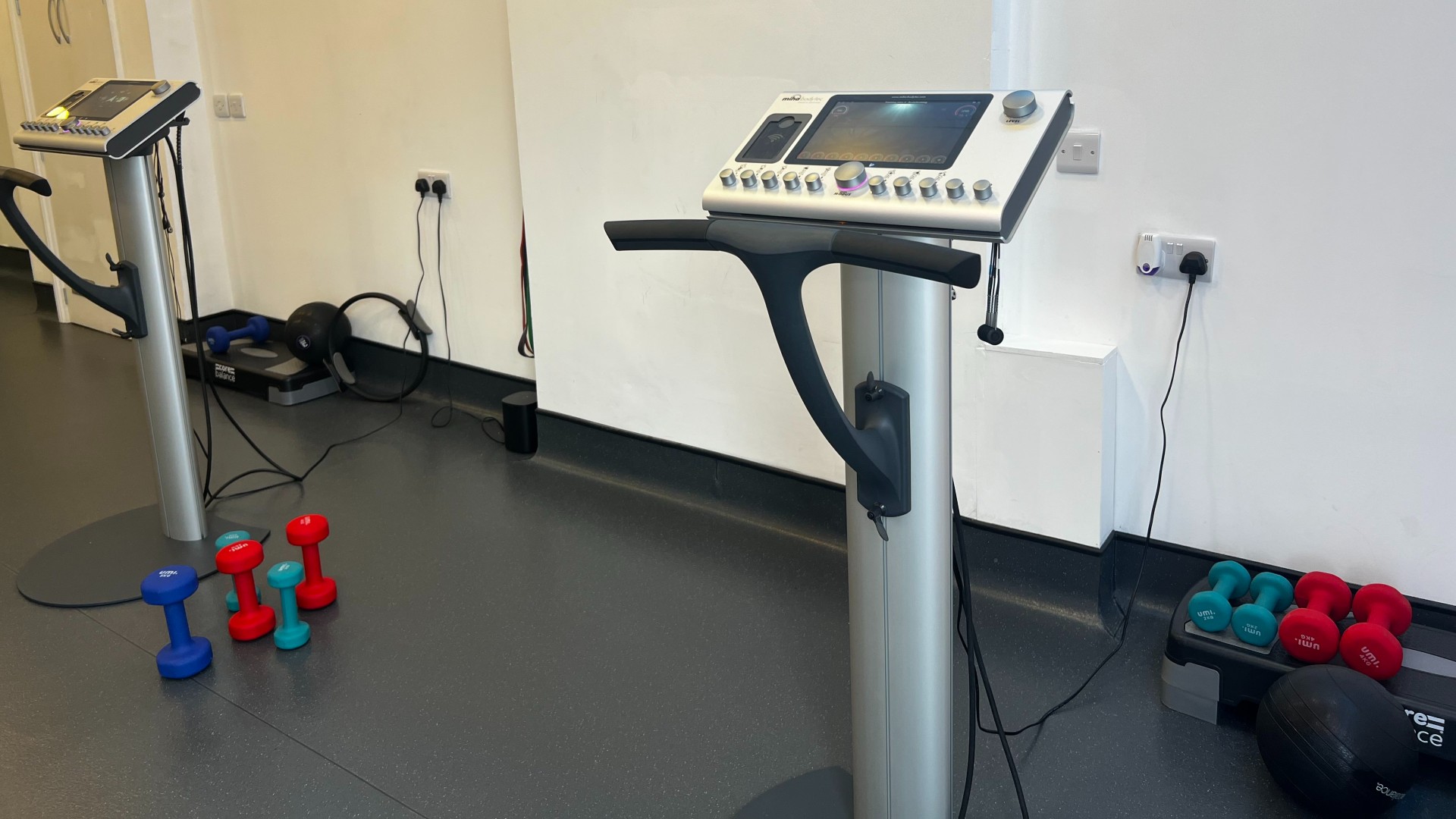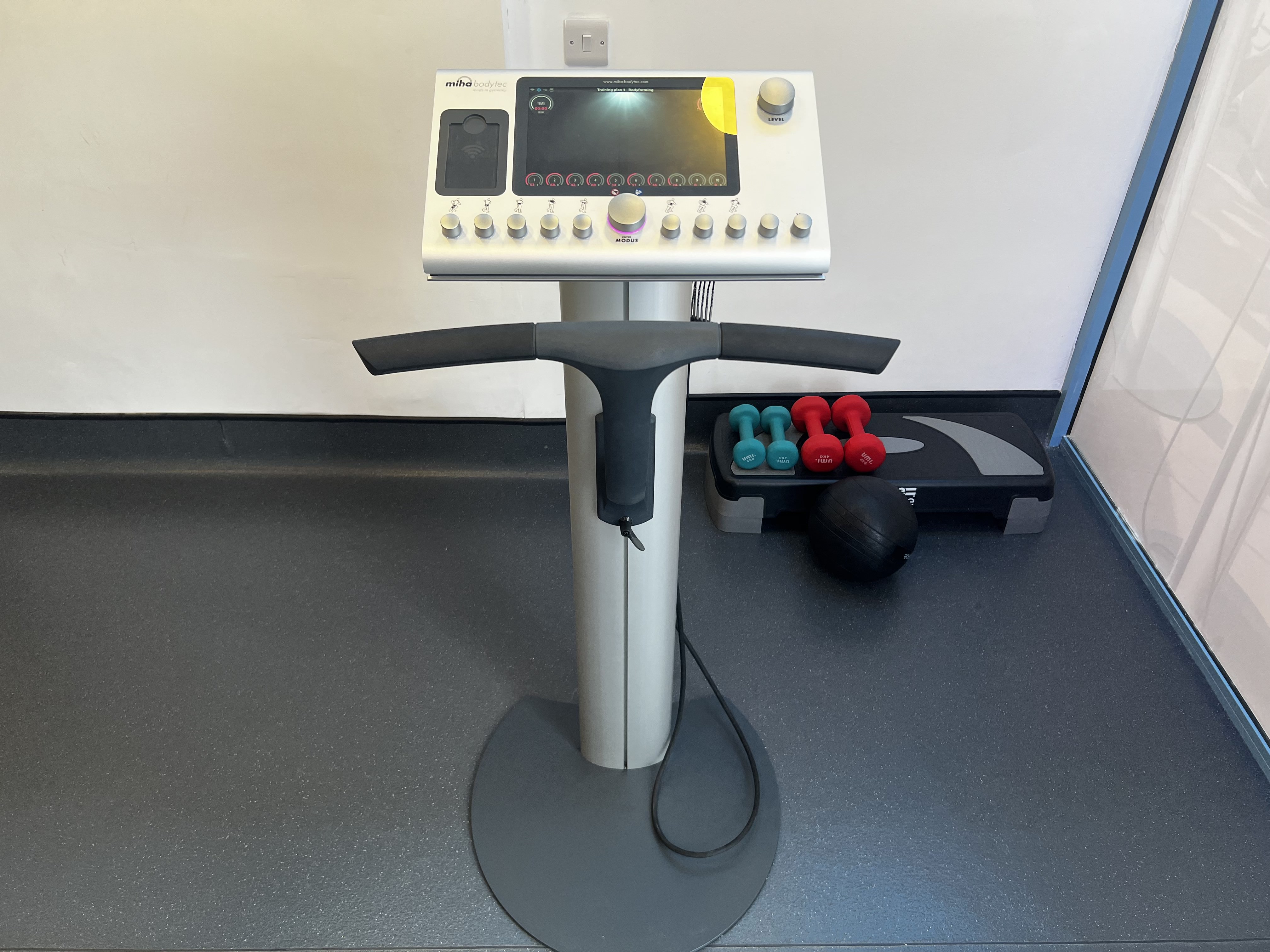
As I headed toward my first EMS training session, I wondered what I was walking into. Turns out, I would barely be walking back out, and I’m still not convinced my butt has fully recovered.
Before I worked in fitness journalism, if someone had asked me to spray myself with water and do a 20-minute workout strapped into a suit emitting electrical impulses to my muscles, I’d have probably passed. But I’ve taken on some curious fitness challenges at Tom’s Guide, so what’s another one? And with celeb endorsements like Usain Bolt, I admit EMS training had piqued my interest.
Full disclosure: I didn’t train for a week, month, or year using EMS, so I wasn’t under any illusion that I’d build muscle definition, lose fat, increase strength, or any of the other perceived benefits of EMS training. But Kate Kozuch, our tech editor, exercised with this $2,400 EMS suit for a month. Anyway, here’s what happened when I headed to Feel Electric EMS training for the first time and why my muscles still haven’t recovered.
What is EMS training?
Let’s get techy before we jump in.
EMS (Electro Muscle Stimulation) is a 20-minute workout method recommended once or twice weekly. During a session, you’ll wear prescribed undergarments and a suit not dissimilar to a life jacket, all doused in water. Arm and leg straps complete the look alongside a nifty thick band underneath your bum.
Each 20-minute workout consists of exercises like bicep curls, lunges, and squats while a trainer turns various dials to control where, when, and with what intensity you receive impulses to your muscles.
The idea is to mimic natural muscle contractions, but you’ll work a whopping 98% of your muscles in just 20 minutes, reaching around 54,000 muscle contractions — far more than you’d achieve in a gym. A 20-minute EMS workout could physically work your muscles like a 90-minute HIIT class. Yikes.

I just tried 20 minutes of EMS training — here’s what happened to my muscles
Here's what I gathered from a 20-minute EMS workout.
Before: I was nervous
A trainer swept me over to an In-Body scanner that analyzed metrics like weight, fat percentage, and lean muscle mass. Assessment complete, I got handed some thin undergarments and a pair of thick grip socks before clipping into the suit and its various arm, leg, and glute straps.
The trainer hooked up some cords, then sent me waddling over to a machine, connecting me to that. (It’s not a look that will catch on.) Next, he took me through the basics, turning a series of dials one at a time to deliver gentle stimulation to each muscle group, confirming that a) it won’t hurt and b) the machine works.
During: I hated it
I can’t sugarcoat it — three minutes in, and I wanted out. To show what EMS training could really do, my trainer asked me to perform a bicep curl while he ramped up the impulses to my arm, which I now couldn’t move. Thankfully, the rest of the session wasn’t this intense, and it got easier to move when I started compound exercises — multi-joint multi-muscle moves like lunges — where my muscles were working together.
I was guided through various exercises and coached to use my breath. On every exhale, I would perform a move and hold it briefly as the trainer delivered increasingly intense impulses to the relevant muscle groups. It felt like pins and needles — uncomfortable.
I worked up a sweat
I was surprised by how much I worked up a sweat, and not from the prior water dousing I’d experienced, either — genuine sweat. But for someone who enjoys lifting weights regularly, I didn’t feel like I had worked out and was left craving the crawl-along-the-floor beasting that a CrossFit or HIIT class provides.
After doing some digging, the exercises you can do during EMS training are endless — from cardio workouts to aid weight loss, strength programs to build strength and muscle, and rehabilitation programs to improve muscle and joint-related injuries like back pain.
I felt it most in my lower back and core muscles

When I did 80 sprawls every day for a week, I mentioned how much I enjoyed torching my core muscles. During the standing crunch exercise, my trainer instructed me to squeeze my stomach muscles and draw my elbow and knee together as he delivered another wave of impulses to my abs. I could feel a deep contraction in my lower abs and found it hard to balance as I crunched.
The stronger the contraction, the more resistance you’re working through, making it harder for your body to move — like lifting heavy weights. I found this limited my range of motion, but perhaps I just need to get used to moving and breathing with the sensations.
After: The DOMS were killer
During the short 20-minute class, you can expect 98% of muscles to engage, and you’ll receive around 54,000 contractions. I could barely move the next day. I’d heard about the DOMS (Delayed-Onset Muscle Soreness) associated with EMS before and decided to ask my trainer for the lowdown.
Think about performing a bicep curl. When you curl, your bicep contracts, and your tricep relaxes and lengthens. During EMS training, all the muscles in the stimulated area contract, meaning you work muscles much harder through a full range of motion. He advised me that weaker, underused muscles will also activate, which means you’re more likely to experience DOMS in those areas.
Sure enough, my glutes, left shoulder, and left tricep were intensely sore for almost a week after. I’m nursing an ongoing rotator cuff injury in my left shoulder, so I figured the machine had kicked my slacking muscles into gear. Not bad, except I now couldn’t stand up — for days.
Do EMS workouts work?
EMS promises a sculpted body without spending hours in the gym. My muscles were in agony after, but does EMS training deliver?
Perceived benefits include weight loss and building muscle, strength, endurance, flexibility and mobility. Reduced pain and improved sports performance through better power, core strength, and faster recovery are also up for grabs. And those in favor of EMS also say you could shred plenty of calories, tone and firm the body, and strengthen deep tissue muscle.
Some research backs EMS to an extent, advising intensity to be as "high as an individual can tolerate" and advising sessions three times a week for five or six weeks. While the study didn’t promise the same glow-up that EMS companies do, they did note improved functional performances and reduced atrophy of fast-twitch muscle fibers (the ones responsible for explosive movement). But the research also says that EMS shouldn’t replace other exercises that promote positive effects like a healthier mind.
Overall, research is limited, and according to the U.S. Food and Drug Administration (FDA), any muscle toning or firming is likely temporary. My advice? Check out these epic workouts below instead.







